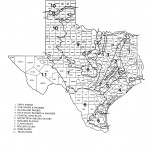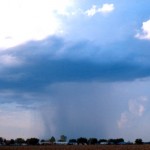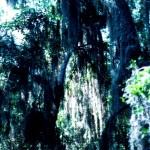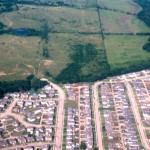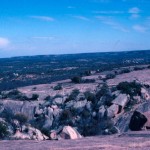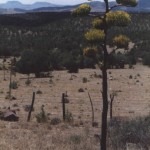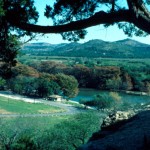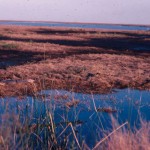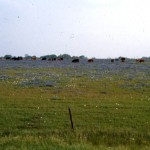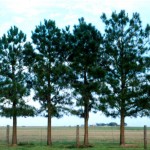SPECIES DIVERSITY AND DISTRIBUTION from: Goodwin, J. T. and B. M. Drees. 1996. The horse and deer flies (Diptera: Tabanidae) of Texas. Southwestern Entomologist Supplement No. 20,. 140 pp.
As the largest of the 48 contiguous United States, Texas provides an enormous variety of habitats for both plant and animal life. Nearly 1,000 miles in both north-south and east-west dimensions, Texas covers 267,000 square miles, or about 171 million acres. Rivers and lakes cover roughly 6,000 square miles. It is interesting to note that all major lakes, except Caddo Lake, are manmade impoundments. Six major river basins (Trinity, Neches, Brazos, Colorado, Guadalupe, and Nueces) flow southeasterly into the Gulf of Mexico, and three (Canadian, Red, and Sulfur) are part of the Mississippi River system. From the east, elevation above sea level increases gradually from around 60 meters (0 meters at the coast) up to 2,000 m in the west. Some mountains in extreme western Texas exceed 2,400 m. Mean annual precipitation decreases from east to west, from 1,450+ to 200 mm or less. Changes from north to south include mean annual temperature (13-23°C) and mean length in frost free days (185-320 days). There is also considerable diversity in soil types. For more detailed discussion on these and other variables, as well as for excellent maps, readers are referred to the Atlas of Texas (Arbingast 1976).
Many authors have recognized the geological and climatological diversity of Texas and its impact on species diversity and distribution of animals and plants. Another factor of significance is that Texas is located at the southern limit of the Nearctic realm, hence it is influenced from the south by species of plants and animals of Neotropical origin.
Dice (1943) recognized, in general, the biotic diversity of Texas in his division of the entire continent into biotic provinces. He stated that a biotic province is:
. . . a considerable and continuous geographic area and is characterized by the occurrence of one or more ecologic associations that differ, at least in proportional area covered, from the associations of adjacent provinces. In general, biotic provinces are characterized also by peculiarities of vegetation type, ecological climax, flora, fauna, climate, physiography, and soil.
Blair (1950), using the biotic provinces presented by Dice (1943), attempted a more detailed division of Texas into provinces. Although he emphasized that such a division needed to consider all ecological factors, his biological considerations were very limited as noted in the following quote:
The present report attempts to fix the boundaries of the biotic provinces of Texas more accurately than was done by Dice in his general report dealing with the provinces of the entire continent. The distribution and classification of biotic provinces in the state are examined in the light of distribution of topographic features, climate, vegetation types, and terrestrial vertebrates exclusive of birds (Blair 1950).
Nevertheless, Blair recognized and characterized seven of Dice’s biotic provinces occurring in Texas. Also, in discussing the fauna of Texas, Blair utilized the three major biotas of Texas first recognized by Cope (1880), including a Sonoran fauna (associated with the arid southwest), an Austroriparian fauna (associated with the forests of the eastern U. S.), and a Neotropical fauna (extending northward through eastern Mexico into Texas).
Regarding vascular flora of Texas, Gould et al. (1960) recognized 10 vegetational areas in Texas. Hatch et al. (1990) recognized the same zones when preparing the Checklist of the Vascular Plants of Texas. The ecological factors affecting the distributions and associations of vascular plants are the same as those previously noted. Although none of the boundaries of the biotic provinces and vegetational areas are identical, there is similarity.
More recently (Anonymous 1978), an interdisciplinary team divided Texas into 11 natural regions (Map 1) and provided general descriptions of each region, and of subregions in some cases. As stated in the report, the team sought a system that would not only recognize the broad natural regions of the state but also serve as common reference scientists, students, visitors, decision makers, and all citizens and contribute to the selections and preservation of unique, significant, unusual, and scenic resources, including rare or endangered species, geological formations, and ecosystems.
LITERATURE CITED
Blair, W.F. 1950. The biotic provinces of Texas. Texas J. Sci. 2:93-117.
Cope, E.D. 1880. On the zoological position of Texas. Bull. U. S. Natl. Mus. 17:1-51.
Dice, L.R. 1943. The biotic provinces of North America. Univ. Michegan Press, Ann Arbor, 78 pp + 1 map.
Gould, F.W., G.O. Hoffman and C.A. Rechenthin. 1960. Vegetational areas of Texas. Texas Agr. Exp. Sta. Leaflet 492, 4 pp.
Hatch, S.L., K.N. Gandhi and L.E. Brown. 1990. Checklist of the vascular plants of Texas. Texas Agric. Expt. Sta. Bull. MP-1655, iv + 158 pp.
SPECIES DIVERSITY AND DISTRIBUTION from: Goodwin, J. T. and B. M. Drees. 1996. The horse and deer flies (Diptera: Tabanidae) of Texas. Southwestern Entomologist Supplement No. 20,. 140 pp.
As the largest of the 48 contiguous United States, Texas provides an enormous variety of habitats for both plant and animal life. Nearly 1,000 miles in both north-south and east-west dimensions, Texas covers 267,000 square miles, or about 171 million acres. Rivers and lakes cover roughly 6,000 square miles. It is interesting to note that all major lakes, except Caddo Lake, are manmade impoundments. Six major river basins (Trinity, Neches, Brazos, Colorado, Guadalupe, and Nueces) flow southeasterly into the Gulf of Mexico, and three (Canadian, Red, and Sulfur) are part of the Mississippi River system. From the east, elevation above sea level increases gradually from around 60 meters (0 meters at the coast) up to 2,000 m in the west. Some mountains in extreme western Texas exceed 2,400 m. Mean annual precipitation decreases from east to west, from 1,450+ to 200 mm or less. Changes from north to south include mean annual temperature (13-23°C) and mean length in frost free days (185-320 days). There is also considerable diversity in soil types. For more detailed discussion on these and other variables, as well as for excellent maps, readers are referred to the Atlas of Texas (Arbingast 1976).
Many authors have recognized the geological and climatological diversity of Texas and its impact on species diversity and distribution of animals and plants. Another factor of significance is that Texas is located at the southern limit of the Nearctic realm, hence it is influenced from the south by species of plants and animals of Neotropical origin.
Dice (1943) recognized, in general, the biotic diversity of Texas in his division of the entire continent into biotic provinces. He stated that a biotic province is:
. . . a considerable and continuous geographic area and is characterized by the occurrence of one or more ecologic associations that differ, at least in proportional area covered, from the associations of adjacent provinces. In general, biotic provinces are characterized also by peculiarities of vegetation type, ecological climax, flora, fauna, climate, physiography, and soil.
Blair (1950), using the biotic provinces presented by Dice (1943), attempted a more detailed division of Texas into provinces. Although he emphasized that such a division needed to consider all ecological factors, his biological considerations were very limited as noted in the following quote:
The present report attempts to fix the boundaries of the biotic provinces of Texas more accurately than was done by Dice in his general report dealing with the provinces of the entire continent. The distribution and classification of biotic provinces in the state are examined in the light of distribution of topographic features, climate, vegetation types, and terrestrial vertebrates exclusive of birds (Blair 1950).
Nevertheless, Blair recognized and characterized seven of Dice’s biotic provinces occurring in Texas. Also, in discussing the fauna of Texas, Blair utilized the three major biotas of Texas first recognized by Cope (1880), including a Sonoran fauna (associated with the arid southwest), an Austroriparian fauna (associated with the forests of the eastern U. S.), and a Neotropical fauna (extending northward through eastern Mexico into Texas).
Regarding vascular flora of Texas, Gould et al. (1960) recognized 10 vegetational areas in Texas. Hatch et al. (1990) recognized the same zones when preparing the Checklist of the Vascular Plants of Texas. The ecological factors affecting the distributions and associations of vascular plants are the same as those previously noted. Although none of the boundaries of the biotic provinces and vegetational areas are identical, there is similarity.
More recently (Anonymous 1978), an interdisciplinary team divided Texas into 11 natural regions (Map 1) and provided general descriptions of each region, and of subregions in some cases. As stated in the report, the team sought a system that would not only recognize the broad natural regions of the state but also serve as common reference scientists, students, visitors, decision makers, and all citizens and contribute to the selections and preservation of unique, significant, unusual, and scenic resources, including rare or endangered species, geological formations, and ecosystems.
LITERATURE CITED
Blair, W.F. 1950. The biotic provinces of Texas. Texas J. Sci. 2:93-117.
Cope, E.D. 1880. On the zoological position of Texas. Bull. U. S. Natl. Mus. 17:1-51.
Dice, L.R. 1943. The biotic provinces of North America. Univ. Michegan Press, Ann Arbor, 78 pp + 1 map.
Gould, F.W., G.O. Hoffman and C.A. Rechenthin. 1960. Vegetational areas of Texas. Texas Agr. Exp. Sta. Leaflet 492, 4 pp.
Hatch, S.L., K.N. Gandhi and L.E. Brown. 1990. Checklist of the vascular plants of Texas. Texas Agric. Expt. Sta. Bull. MP-1655, iv + 158 pp.
Click on a thumbnail to see a larger image.


- Click the image for a larger, downloadable map

